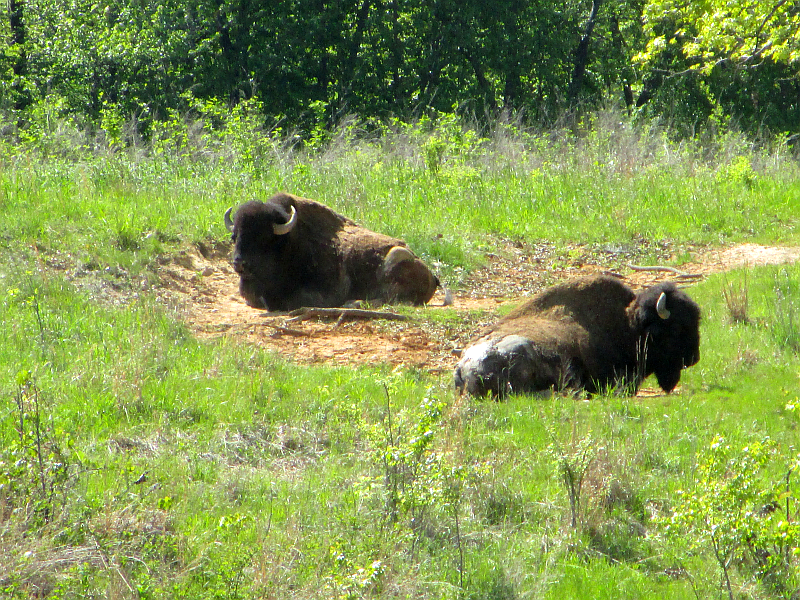 Back in August, I wrote about the South Carolina wilderness as it appeared to early European settlers, and promised I'd discuss the different types of wildlife that populated this frontier. Years ago, at Charles Towne Landing, a state park in Charleston, South Carolina, site of the earliest permanent settlement in the area, visitors could walk through an area called the Animal Forest and see examples of such wildlife. I've no idea to what degree the park maintains this area--so much else there has changed, though the park website still advertises it as an attraction--but our family has never forgotten our visits. Panthers, wolves, elk, bison, black bears, wild turkeys, and otters shared space with alligators, foxes, raccoons, and other critters who remain when others moved west or were hunted into scarcity.
Back in August, I wrote about the South Carolina wilderness as it appeared to early European settlers, and promised I'd discuss the different types of wildlife that populated this frontier. Years ago, at Charles Towne Landing, a state park in Charleston, South Carolina, site of the earliest permanent settlement in the area, visitors could walk through an area called the Animal Forest and see examples of such wildlife. I've no idea to what degree the park maintains this area--so much else there has changed, though the park website still advertises it as an attraction--but our family has never forgotten our visits. Panthers, wolves, elk, bison, black bears, wild turkeys, and otters shared space with alligators, foxes, raccoons, and other critters who remain when others moved west or were hunted into scarcity.John Henry Logan describes great herds of elk and bison across the Carolinas in the early 1700's, and explorers across Cumberland Gap into Kentucky attest to the richness of game in that area as well. When I researched for my Daughters of the Mayflower title The Cumberland Bride, I was under the impression that the elk and bison had mostly disappeared by 1800, but later research revealed this was not so.
One noteworthy source that I haven't covered before is the letters of Sarah McClendon, a settler to western Kentucky, near the Ohio River and a little south of what would become Henderson, about 1794. I ran across this woman's letters, a rather rambly reminisce of her early married life and late husband for the benefit of their three sons, while researching for my upcoming book The Blue Cloak, and found a fascinating trove of all sorts of tidbits, despite misspellings. Sarah recounts how the region they settled was frequented by large herds of elk and bison, and she mentions the curiosity of flocks of parrots, sometimes referred to as the Carolina parakeet.
.jpg) |
| Carolina Parakeet, stuffed and mounted at the Field Museum |
Interestingly, Wikipedia had this to say about the bird:
The Carolina parakeet had the northern-most range of any known parrot. It was found from southern New England and New York and Wisconsin to Kentucky, Tennessee and the Gulf of Mexico. It has also had a wide distribution west of the Mississippi River, as far west as eastern Colorado. Its range was described by early explorers thus: the 43rd parallel as the northern limit, the 26th as the most southern, the 73rd and 106th meridians as the eastern and western boundaries respectively, the range included all or portions of at least 28 states.[Note 6] Its habitats were old-growth wetland forests along rivers and in swamps especially in the Mississippi-Missouri drainage basin with large hollow trees including cypress and sycamore to use as roosting and nesting sites.I may have geeked a little at that last line, imagining flocks of the exotic bird flitting through the Congaree National Park, my feature last month!
Additional note: it should not surprise me when I find various resources for giving people a taste of what our land was like during earlier days--and two such relevant places are the Elk & Bison Prairie, and Blackfish Bison Ranch, both in Kentucky. I haven't visited either place, but they look interesting! (The photo at the top of my post is borrowed from the former site.)

Since I grew up in the mountains of North Carolina, this was really interesting. I had never thought about elk or even buffalo populating this area.
ReplyDeleteNeither did I before we moved to South Carolina and visited Charles Towne Landing for the first time! It was very eye opening. :-)
DeleteThank you for this enlightening post. I find research the most difficult part of writing historical. Where/how did you find the letters?
ReplyDeleteResearch can be SO hard! I stumbled across the letters when doing a Google search on the notorious Harpes (the subject of my upcoming novel The Blue Cloak). Her letters were particularly interesting, not just because she includes a couple of eyewitness accounts of encounters with the Harpes that are interestingly not part of what I call "Harpe canon" (the standard accounts/legends surrounding them) and a perspective on things that are canon, but details about the early settlers' experiences that I could have used for The Cumberland Bride. I'll be revisiting her letters in a later post, I'm sure!
Deletefascinating. Populations come and go. Wouldn't it be wonderful to see that parrot?
ReplyDeleteThanks, Shannon!
It would be! And if you read the Wiki article, it says that they don't really know why the bird died out--that it wasn't directly because of settlement and deforestation, but possibly because of the spread of poultry disease. We don't really understand the nuances on why some species adapt and remain and why others don't, for sure!
Delete